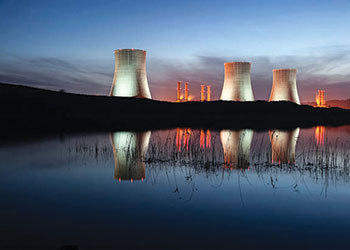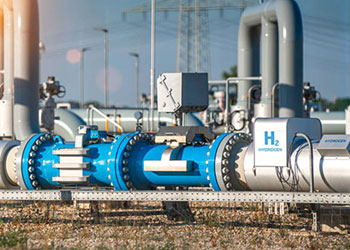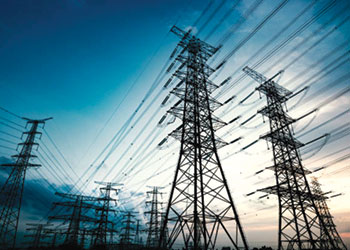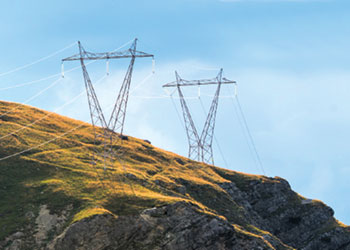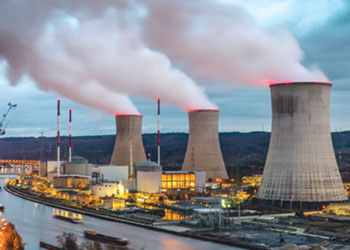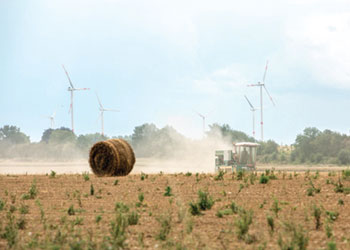

If 'energy transition' means clean energy replaces fossil energy in absolute terms, then the transition has not truly started, according to DVN energy transition outlook 2023.
The report reveals that the transition has happened in some regions and for many communities and individuals, but globally, record emissions from fossil energy are on course to move even higher next year. Up to the present, renewables have met some, but not all, of the world’s additional energy demand.
DVN prediction is that emissions from oil use will peak in 2025 and those from natural gas in 2027.
The report highlighted six significant developments:
• The transition is still at the starting blocks: Global energy-related emissions are increasing and are expected to peak in 2024, marking the beginning of the transition. Renewables have met 51 per cent of new energy demand over the past five years, while fossil sources have 49 per cent. Also, the 'grab for gas' following Russia's invasion of Ukraine has led to high gas prices and a surge in new projects. High gas prices have also intensified coal-fired power generation, driving emissions even higher. Natural gas is losing its status as a 'bridging fuel' for the transition.
• Renewables outsprint fossils from the mid-2020s: The transition to renewable energy sources will take 27 years, with a 48 per cent:52 per cent ratio by mid-century. From 2025, most new capacity will be non-fossil, with wind and solar growing ten-fold and 17-fold, respectively. Low-income countries will largely reduce new fossil production, while high-income countries will largely reduce it. Coal use will decrease from 26 per cent to 10 per cent by 2050, and fossil primary energy demand will decline from 490 EJ to 314 EJ.
• Energy security is moving to the top of the agenda: Over the past 18 months, geopolitical developments have emphasised energy security, with local energy being prioritised over imports. This trend favors renewables, nuclear energy, and coal in some regions. Governments are willing to pay a premium of 6 per cent to 15 per cent for locally-sourced energy. Reshoring and friend-shoring policies are adding to supply chain complexities and costs. Cost reductions are expected to return to historic learning curve rates by 2028. In the long term, energy security and sustainability will continue to improve with decarbonising energy mixes, such as wind, solar, and batteries.
• Progressive policy is having an effect: The recent decarbonisation policy packages, including the Inflation Reduction Act in the US, the EU Green Deal, REPowerEU, and Fit for 55, are accelerating the transition to clean energy. The EU's emission trading system and the International Maritime Organisation's ambitious decarbonisation strategy aim for net zero by 2050. The 'race to the top' in advanced economies will drive global learning benefits in hydrogen and carbon capture and storage technologies. However, scaling clean tech in advanced economies will only benefit medium- and low-income regions, requiring de-risked financing to accelerate the transition.
• Gridlock impedes the near-term expansion of decarbonisation technologies: DNV reported solar installations reached 250 GW in 2022, with wind power contributing 7 per cent of global grid-connected electricity. The global grid will double in length from 100 million circuit-km in 2022 to 205 million c-km in 2050. However, transmission and distribution grid constraints are emerging as a bottleneck for renewable electricity expansion. The EU and US are advancing policies to address permitting delays, but a deeper response is needed, including expropriation and financing to ease cable manufacturing production constraints. Grid expansion is crucial for hydrogen production, which relies on robust demand-side measures to incentivise offtake.
• Global emissions will fall, but not fast or far enough: DNV predicts that global energy-related CO2 emissions will be 46 per cent lower in 2050, and only 4 per cent lower by 2030. These emissions are linked to 2.2°C of global warming by the end of this century. The renewable energy mix will grow by over one percentage point per year, reaching a 52 per cent non-fossil share by 2050. However, the transition pace is slow enough for a net-zero energy system, and limiting global warming to 1.5°C is less likely than ever.
“Achieving a net-zero energy system by 2050 to secure a 1.5 deg C warming future is more difficult than ever. That does not mean we should not be aiming for that target. With more expansive policies promoting renewable electricity and other zero-carbon solutions, not just in the high-income world, but globally, we have the means to keep the world on track to be at, or very near, net zero by mid-century,” said in a statement.



















































































